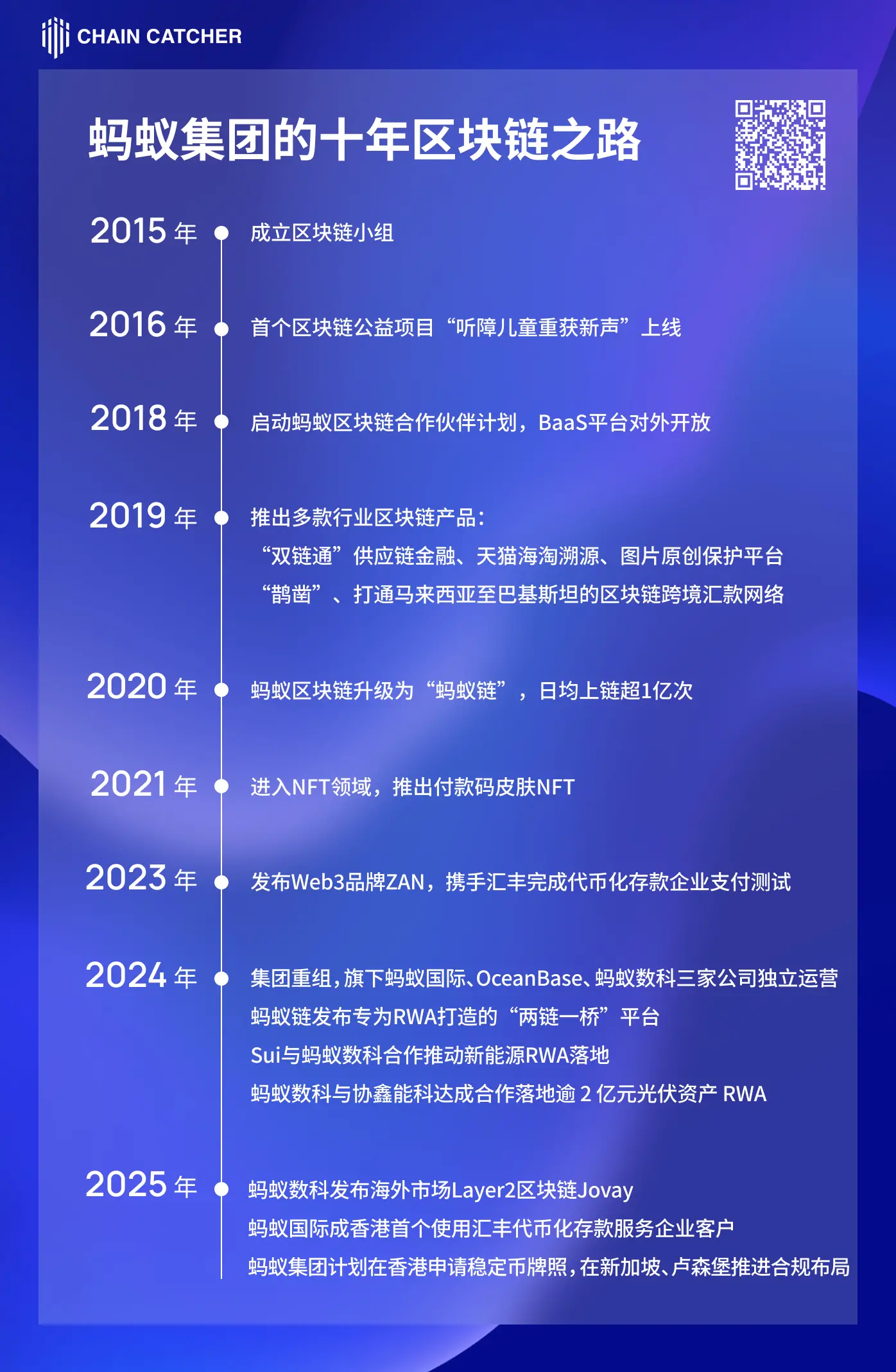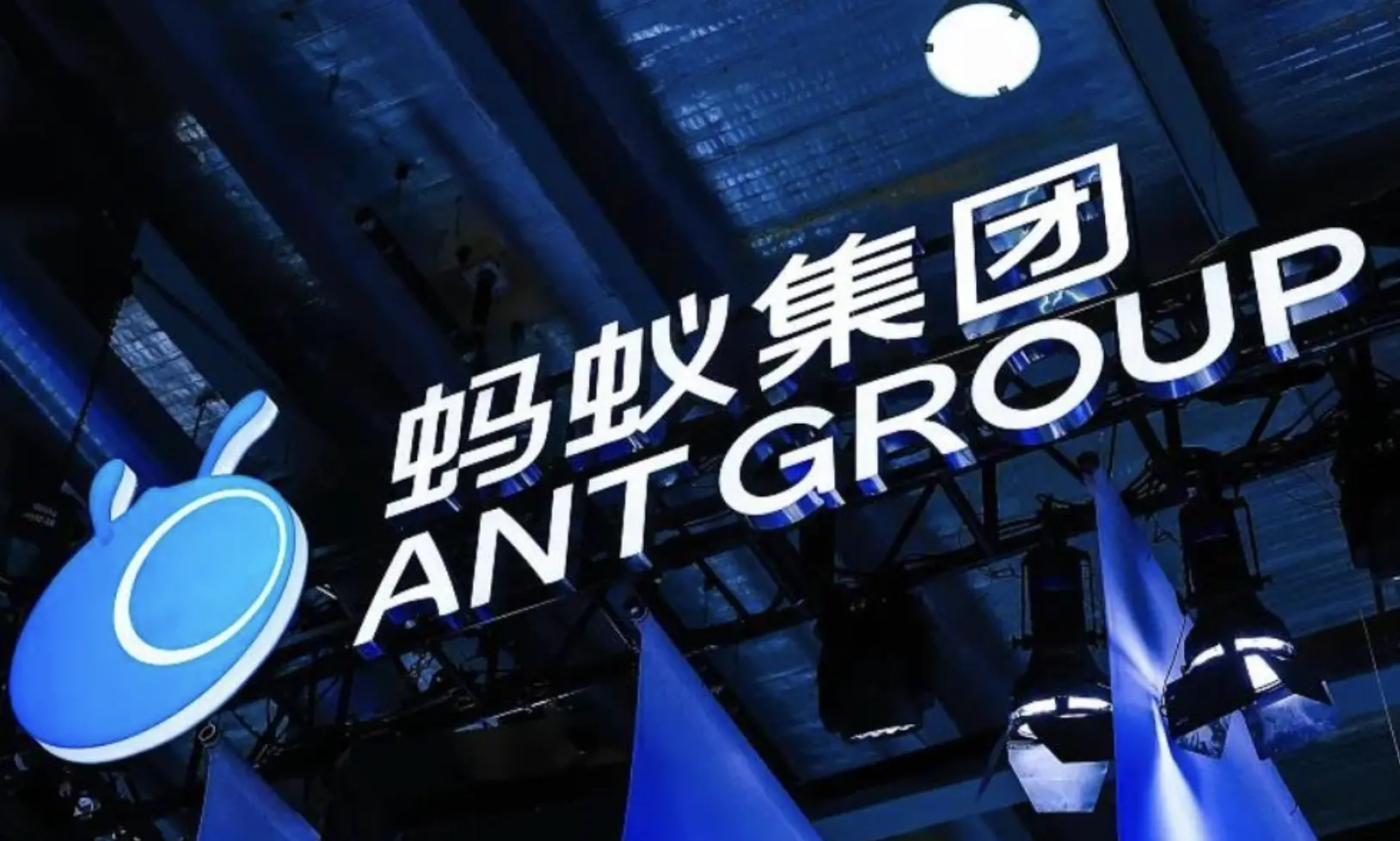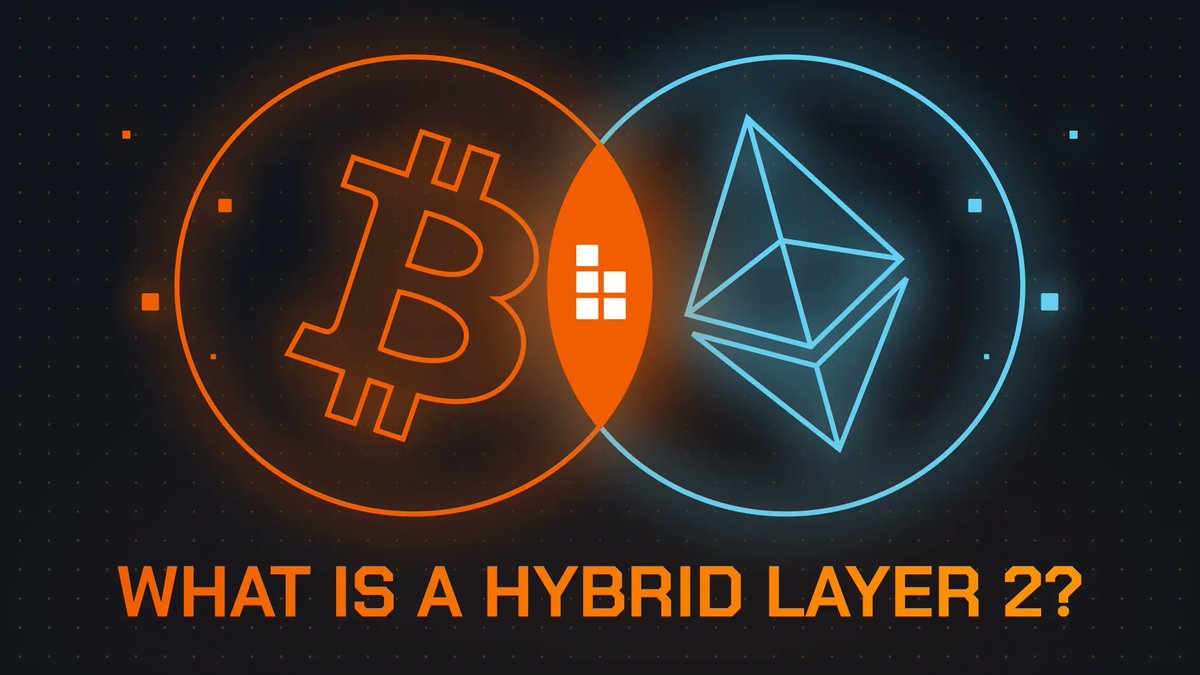
LINK
Chainlink价格
高市值
$14.2450
-$1.3690
(-8.77%)
从 (UTC+8) 0 点 到现在的价格变化

免责声明
本页面的社交内容 (包括由 LunarCrush 提供支持的推文和社交统计数据) 均来自第三方,并按“原样”提供,仅供参考。本文内容不代表对任何数字货币或投资的认可或推荐,也未获得欧易授权或撰写,也不代表我们的观点。我们不保证所显示的用户生成内容的准确性或可靠性。本文不应被解释为财务或投资建议。在做出投资决策之前,评估您的投资经验、财务状况、投资目标和风险承受能力并咨询独立财务顾问至关重要。过去的表现并不代表未来的结果。您的投资价值可能会波动,您可能无法收回您投资的金额。您对自己的投资选择自行承担全部责任,我们对因使用本信息而造成的任何损失或损害不承担任何责任。提供外部网站链接是为了用户方便,并不意味着对其内容的认可或控制。
请参阅我们的 使用条款 和 风险警告,了解更多详情。通过使用第三方网站(“第三方网站”),您同意对第三方网站的任何使用均受第三方网站条款的约束和管辖。除非书面明确说明,否则欧易及其关联方(“OKX”)与第三方网站的所有者或运营商没有任何关联。您同意欧易对您使用第三方网站而产生的任何损失、损害和任何其他后果不承担任何责任。请注意,使用第三方网站可能会导致您的资产损失或贬值。本产品可能无法在所有司法管辖区提供或适用。
请参阅我们的 使用条款 和 风险警告,了解更多详情。通过使用第三方网站(“第三方网站”),您同意对第三方网站的任何使用均受第三方网站条款的约束和管辖。除非书面明确说明,否则欧易及其关联方(“OKX”)与第三方网站的所有者或运营商没有任何关联。您同意欧易对您使用第三方网站而产生的任何损失、损害和任何其他后果不承担任何责任。请注意,使用第三方网站可能会导致您的资产损失或贬值。本产品可能无法在所有司法管辖区提供或适用。
Chainlink 市场信息
市值
市值是通过流通总应量与最新价格相乘进行计算。市值 = 当前流通量 × 最新价
流通总量
目前该代币在市场流通的数量
市值排行
该资产的市值排名
历史最高价
该代币在交易历史中的最高价格
历史最低价
该代币在交易历史中的最低价格
24 小时最高
$15.6540
24 小时最低
$14.0550
历史最高价
$52.9920
-73.12% (-$38.7470)
最后更新日期:2021年5月10日 (UTC+8)
历史最低价
$0.16000
+8,803.12% (+$14.0850)
最后更新日期:2018年6月29日 (UTC+8)
您认为 LINK 今天会涨还是会跌?
您可以点赞或点踩来表达对该币种今日涨跌的预测
投票并查看结果
Chainlink 动态资讯
以下内容源自 。

ChainCatcher 链捕手
作者:Fairy,ChainCatcher
编辑:TB,ChainCatcher
稳定币,这块全球支付的新战场,科技巨头们谁都不想错过。
在香港稳定币监管新政即将落地之际,蚂蚁集团出手了。其旗下国际业务主体蚂蚁国际计划在政策生效后第一时间申请稳定币发行人牌照,并同步在新加坡、卢森堡等市场推进合规布局。
京东、蚂蚁、渣打银行...一场关于稳定币的“巨头争夺战”正在拉开帷幕。
蚂蚁稳定币布局将打开1500亿美元新空间?
风声起于6月10日,德意志银行宣布与蚂蚁国际达成合作,双方将在代币化存款和稳定币解决方案等前沿领域展开探索。这场跨国金融科技合作成了蚂蚁国际稳定币布局的前奏。
两日后,蚂蚁国际宣布将申请香港稳定币发行人牌照。其表示,正在全球财资管理方面加速投资、拓展合作,将AI、区块链和稳定币创新投入真实可靠的大规模应用。
此举或显示蚂蚁集团已将稳定币纳入其全球金融科技战略核心,意图以此构建覆盖跨境资金流动的“稳定锚点”。消息引发市场强烈反应,港股“蚂蚁金服概念股”集体上涨,云锋金融盘中一度飙升98%,狮腾控股涨近15%。
值得注意的是,据彭博社披露,蚂蚁国际2024年处理的全球资金总额超过1万亿美元,其中超过三分之一是通过其区块链平台 Whale 完成的,粗略估算即超过3000亿美元的资金在链上流转。如果其中有一半可向稳定币场景延展,那么仅蚂蚁现有业务体系内,稳定币交易量的理论空间就已达到1500亿美元级别。
蚂蚁的十年链路
事实上,蚂蚁集团对 Web3 的探索早已悄然展开,并在近十年间持续推进。
早在 2015 年,蚂蚁金服便成立了区块链小组,开启对这一前沿技术的系统研究。次年,其开发的首个区块链公益应用“听障儿童重获新声”成功上线,实现对善款流向的全链条追踪,成为国内早期区块链技术落地的代表案例。
进入 2018 年,蚂蚁区块链完成了从“技术项目”向“平台生态”的转型,正式启动合作伙伴计划,并向外开放了 BaaS 区块链平台。这一战略转变也为后续的产品爆发打下了基础。
2019 年,蚂蚁区块链产品开始加速落地:供应链金融领域推出“双链通”,服务中小企业融资需求;天猫双11的 4 亿件海淘商品通过区块链实现原产地溯源;原创图片版权保护平台“鹊凿”上线;甚至打通了马来西亚至巴基斯坦的区块链跨境汇款网络,显示出强烈的全球化野心。
2020 年,蚂蚁正式将蚂蚁区块链升级为“蚂蚁链”,并宣布其日均上链次数已突破1亿次。
2021年,蚂蚁链进入NFT领域,推出付款码皮肤NFT。
2023 年,蚂蚁在香港推出专注 Web3 的子品牌 ZAN,面向海外市场提供合规的技术解决方案。同年,蚂蚁集团与汇丰银行合作,完成了基于代币化存款的企业内部支付交易测试,首次将传统金融和链上技术融合于真实场景中。
2024 年,蚂蚁集团完成重组,旗下蚂蚁国际、OceanBase、蚂蚁数科三家公司独立运营,分别设立董事会和 CEO 架构。此后,蚂蚁国际、蚂蚁数科在Web3领域持续布局,尤其是在RWA领域。
2024年12月,Sui 与蚂蚁数科达成合作,推动 RWA 落地新能源产业。
2025年4月,蚂蚁数科宣布面向海外市场推出Layer2区块链 Jovay。
2025年5月,蚂蚁国际成为香港首个使用汇丰银行代币化存款服务的企业客户。
......
从底层链到合规出海,从公益场景到全球支付,蚂蚁用一条不喧哗、却极具战略深度的路径,持续构筑自己的 Web3 版图。
巨头争牌
随着香港启动稳定币沙盒测试并明确即将推出发牌制度,一场“巨头争牌”的竞速正在悄然上演。蚂蚁是率先行动的代表,但这场游戏里,早已挤满了有备而来的玩家。
早在去年7月,5家巨头就已成为稳定币发行人“沙盒”参与者:京东币链科技、圆币科技、渣打银行、Animoca Brands、香港电讯。
除此之外,以下公司曾有意参与香港稳定币发行:
2023年11月,Hashkey Group 创始人肖风博士在演讲中表示,Hashkey Group 将联合圆币科技、众安银行在香港共同发行稳定币。
2024年5月,港股上市公司裕承科金与 Chainlink 达成合作,拟探索香港稳定币发行
从目前浮出水面的玩家构成来看,香港稳定币赛道正聚集三类力量:传统金融机构如渣打银行、众安银行,将稳定币视为代币化存款和链上账户的试验场;科技与电商巨头如蚂蚁集团、京东,更侧重于将稳定币融入其生态,推动跨境支付、数字消费场景的应用落地;而以Animoca Brands、HashKey Group为代表的Web3原生力量,试图借助香港的政策窗口打造具备竞争力的链上稳定资产。
蚂蚁集团的战略布局不仅展现出其对全球市场动态的敏锐洞察,也昭示了支付与资金流转的新方向。随着更多巨头涌入,稳定币生态的成熟和创新,将推动全球支付体系迈入全新时代。


2,270
0
USD 兑换 LINK


Chainlink 价格表现 (美元)
Chainlink 当前价格为 $14.2450。Chainlink 的价格从 00:00 (UTC+8) 下跌了 -8.77%。目前,Chainlink 市值排名为第 10 名,实时市值为 $93.08亿,流通供应量为 657,099,970 LINK,最大供应量为 1,000,000,000 LINK。我们会实时更新 Chainlink/USD 的价格。
今日
-$1.3690
-8.77%
7 天
+$0.47500
+3.44%
30 天
-$2.4240
-14.55%
3 个月
+$0.58200
+4.25%
关于 Chainlink (LINK)
此评级是欧易从不同来源收集的汇总评级,仅供一般参考。欧易不保证评级的质量或准确性。欧易无意提供 (i) 投资建议或推荐;(ii) 购买、出售或持有数字资产的要约或招揽;(iii) 财务、会计、法律或税务建议。包括稳定币和 NFT 的数字资产容易受到市场波动的影响,风险较高,波动较大,可能会贬值甚至变得一文不值。数字资产的价格和性能不受保证,且可能会发生变化,恕不另行通知。您的数字资产不受潜在损失保险的保障。 历史回报并不代表未来回报。欧易不保证任何回报、本金或利息的偿还。欧易不提供投资或资产建议。您应该根据自身的财务状况仔细考虑交易或持有数字资产是否适合您。具体情况请咨询您的专业法务、税务或投资人士。
展开更多
- 官网
- 白皮书
- 区块浏览器
关于第三方网站
关于第三方网站
通过使用第三方网站(“第三方网站”),您同意对第三方网站的任何使用均受第三方网站条款的约束和管辖。除非书面明确说明,否则 OKX 及其关联方(“OKX”)与第三方网站的所有者或运营商没有任何关联。您同意 OKX 对您使用第三方网站而产生的任何损失、损害和任何其他后果不承担任何责任。请注意,使用第三方网站可能会导致您的资产损失或贬值。
Chainlink 常见问题
什么是 Chainlink?
Chainlink是一个去中心化的oracle网络,连接区块链生态系统和现实世界。Chainlink支持复杂智能合约的操作,这些合约需要链下数据才能运行。它是一个基于区块链的数据协议,允许独立数据提供者将数据中继到智能合约。
Chainlink 提供什么服务?
Chainlink最初是一个可验证的链下数据提供商,但后来扩展了其服务,在区块链智能合约中包含更多功能。Chainlink产品包括针对所有类型的真实世界信息的高质量数据供给、名为Chainlink VRF的随机数生成器、自动化智能合约功能的Keppers、储备证明(它允许项目所有者发布关于其链上和链下储备的透明报告)以及跨链互操作性协议(CCIP),它帮助开发人员开发互操作的去中心化应用程序。
Chainlink 提供哪些数据点?
链链数据oracle提供关于加密货币、大宗商品、外汇、指数和其他链下数据(如天气事件、体育结果等)的优质金融市场数据,允许您使用安全可靠的数据为去中心化应用程序提供动力。
Chainlink 今天值多少钱?
目前,一个 Chainlink 价值是 $14.2450。如果您想要了解 Chainlink 价格走势与行情洞察,那么这里就是您的最佳选择。在欧易探索最新的 Chainlink 图表,进行专业交易。
数字货币是什么?
数字货币,例如 Chainlink 是在称为区块链的公共分类账上运行的数字资产。了解有关欧易上提供的数字货币和代币及其不同属性的更多信息,其中包括实时价格和实时图表。
数字货币是什么时候开始的?
由于 2008 年金融危机,人们对去中心化金融的兴趣激增。比特币作为去中心化网络上的安全数字资产提供了一种新颖的解决方案。从那时起,许多其他代币 (例如 Chainlink) 也诞生了。
Chainlink 的价格今天会涨吗?
查看 Chainlink 价格预测页面,预测未来价格,帮助您设定价格目标。
ESG 披露
ESG (环境、社会和治理) 法规针对数字资产,旨在应对其环境影响 (如高能耗挖矿)、提升透明度,并确保合规的治理实践。使数字代币行业与更广泛的可持续发展和社会目标保持一致。这些法规鼓励遵循相关标准,以降低风险并提高数字资产的可信度。
资产详情
名称
OKcoin Europe LTD
相关法人机构识别编码
54930069NLWEIGLHXU42
代币名称
ChainLink Token
共识机制
ChainLink Token is present on the following networks: Arbitrum, Avalanche, Binance Smart Chain, Ethereum, Fantom, Gnosis Chain, Optimism, Polygon, Solana.
Arbitrum is a Layer 2 solution on top of Ethereum that uses Optimistic Rollups to enhance scalability and reduce transaction costs. It assumes that transactions are valid by default and only verifies them if there's a challenge (optimistic): Core Components: • Sequencer: Orders transactions and creates batches for processing. • Bridge: Facilitates asset transfers between Arbitrum and Ethereum. • Fraud Proofs: Protect against invalid transactions through an interactive verification process. Verification Process: 1. Transaction Submission: Users submit transactions to the Arbitrum Sequencer, which orders and batches them. 2. State Commitment: These batches are submitted to Ethereum with a state commitment. 3. Challenge Period: Validators have a specific period to challenge the state if they suspect fraud. 4. Dispute Resolution: If a challenge occurs, the dispute is resolved through an iterative process to identify the fraudulent transaction. The final operation is executed on Ethereum to determine the correct state. 5. Rollback and Penalties: If fraud is proven, the state is rolled back, and the dishonest party is penalized. Security and Efficiency: The combination of the Sequencer, bridge, and interactive fraud proofs ensures that the system remains secure and efficient. By minimizing on-chain data and leveraging off-chain computations, Arbitrum can provide high throughput and low fees.
The Avalanche blockchain network employs a unique Proof-of-Stake consensus mechanism called Avalanche Consensus, which involves three interconnected protocols: Snowball, Snowflake, and Avalanche. Avalanche Consensus Process 1. Snowball Protocol: o Random Sampling: Each validator randomly samples a small, constant-sized subset of other validators. Repeated Polling: Validators repeatedly poll the sampled validators to determine the preferred transaction. Confidence Counters: Validators maintain confidence counters for each transaction, incrementing them each time a sampled validator supports their preferred transaction. Decision Threshold: Once the confidence counter exceeds a pre-defined threshold, the transaction is considered accepted. 2. Snowflake Protocol: Binary Decision: Enhances the Snowball protocol by incorporating a binary decision process. Validators decide between two conflicting transactions. Binary Confidence: Confidence counters are used to track the preferred binary decision. Finality: When a binary decision reaches a certain confidence level, it becomes final. 3. Avalanche Protocol: DAG Structure: Uses a Directed Acyclic Graph (DAG) structure to organize transactions, allowing for parallel processing and higher throughput. Transaction Ordering: Transactions are added to the DAG based on their dependencies, ensuring a consistent order. Consensus on DAG: While most Proof-of-Stake Protocols use a Byzantine Fault Tolerant (BFT) consensus, Avalanche uses the Avalanche Consensus, Validators reach consensus on the structure and contents of the DAG through repeated Snowball and Snowflake.
Binance Smart Chain (BSC) uses a hybrid consensus mechanism called Proof of Staked Authority (PoSA), which combines elements of Delegated Proof of Stake (DPoS) and Proof of Authority (PoA). This method ensures fast block times and low fees while maintaining a level of decentralization and security. Core Components 1. Validators (so-called “Cabinet Members”): Validators on BSC are responsible for producing new blocks, validating transactions, and maintaining the network’s security. To become a validator, an entity must stake a significant amount of BNB (Binance Coin). Validators are selected through staking and voting by token holders. There are 21 active validators at any given time, rotating to ensure decentralization and security. 2. Delegators: Token holders who do not wish to run validator nodes can delegate their BNB tokens to validators. This delegation helps validators increase their stake and improves their chances of being selected to produce blocks. Delegators earn a share of the rewards that validators receive, incentivizing broad participation in network security. 3. Candidates: Candidates are nodes that have staked the required amount of BNB and are in the pool waiting to become validators. They are essentially potential validators who are not currently active but can be elected to the validator set through community voting. Candidates play a crucial role in ensuring there is always a sufficient pool of nodes ready to take on validation tasks, thus maintaining network resilience and decentralization. Consensus Process 4. Validator Selection: Validators are chosen based on the amount of BNB staked and votes received from delegators. The more BNB staked and votes received, the higher the chance of being selected to validate transactions and produce new blocks. The selection process involves both the current validators and the pool of candidates, ensuring a dynamic and secure rotation of nodes. 5. Block Production: The selected validators take turns producing blocks in a PoA-like manner, ensuring that blocks are generated quickly and efficiently. Validators validate transactions, add them to new blocks, and broadcast these blocks to the network. 6. Transaction Finality: BSC achieves fast block times of around 3 seconds and quick transaction finality. This is achieved through the efficient PoSA mechanism that allows validators to rapidly reach consensus. Security and Economic Incentives 7. Staking: Validators are required to stake a substantial amount of BNB, which acts as collateral to ensure their honest behavior. This staked amount can be slashed if validators act maliciously. Staking incentivizes validators to act in the network's best interest to avoid losing their staked BNB. 8. Delegation and Rewards: Delegators earn rewards proportional to their stake in validators. This incentivizes them to choose reliable validators and participate in the network’s security. Validators and delegators share transaction fees as rewards, which provides continuous economic incentives to maintain network security and performance. 9. Transaction Fees: BSC employs low transaction fees, paid in BNB, making it cost-effective for users. These fees are collected by validators as part of their rewards, further incentivizing them to validate transactions accurately and efficiently.
The crypto-asset's Proof-of-Stake (PoS) consensus mechanism, introduced with The Merge in 2022, replaces mining with validator staking. Validators must stake at least 32 ETH every block a validator is randomly chosen to propose the next block. Once proposed the other validators verify the blocks integrity. The network operates on a slot and epoch system, where a new block is proposed every 12 seconds, and finalization occurs after two epochs (~12.8 minutes) using Casper-FFG. The Beacon Chain coordinates validators, while the fork-choice rule (LMD-GHOST) ensures the chain follows the heaviest accumulated validator votes. Validators earn rewards for proposing and verifying blocks, but face slashing for malicious behavior or inactivity. PoS aims to improve energy efficiency, security, and scalability, with future upgrades like Proto-Danksharding enhancing transaction efficiency.
Fantom operates on the Lachesis Protocol, an Asynchronous Byzantine Fault Tolerant (aBFT) consensus mechanism designed for fast, secure, and scalable transactions. Core Components of Fantom’s Consensus: 1. Lachesis Protocol (aBFT): Asynchronous and Leaderless: Lachesis allows nodes to reach consensus independently without relying on a central leader, enhancing decentralization and speed. DAG Structure: Instead of a linear blockchain, Lachesis uses a Directed Acyclic Graph (DAG) structure, allowing multiple transactions to be processed in parallel across nodes. This structure supports high throughput, making the network suitable for applications requiring rapid transaction processing. 2. Event Blocks and Instant Finality: Event Blocks: Transactions are grouped into event blocks, which are validated asynchronously by multiple validators. When enough validators confirm an event block, it becomes part of the Fantom network’s history. Instant Finality: Transactions on Fantom achieve immediate finality, meaning they are confirmed and cannot be reversed. This property is ideal for applications requiring fast and irreversible transactions.
Gnosis Chain – Consensus Mechanism Gnosis Chain employs a dual-layer structure to balance scalability and security, using Proof of Stake (PoS) for its core consensus and transaction finality. Core Components: Two-Layer Structure Layer 1: Gnosis Beacon Chain The Gnosis Beacon Chain operates on a Proof of Stake (PoS) mechanism, acting as the security and consensus backbone. Validators stake GNO tokens on the Beacon Chain and validate transactions, ensuring network security and finality. Layer 2: Gnosis xDai Chain Gnosis xDai Chain processes transactions and dApp interactions, providing high-speed, low-cost transactions. Layer 2 transaction data is finalized on the Gnosis Beacon Chain, creating an integrated framework where Layer 1 ensures security and finality, and Layer 2 enhances scalability. Validator Role and Staking Validators on the Gnosis Beacon Chain stake GNO tokens and participate in consensus by validating blocks. This setup ensures that validators have an economic interest in maintaining the security and integrity of both the Beacon Chain (Layer 1) and the xDai Chain (Layer 2). Cross-Layer Security Transactions on Layer 2 are ultimately finalized on Layer 1, providing security and finality to all activities on the Gnosis Chain. This architecture allows Gnosis Chain to combine the speed and cost efficiency of Layer 2 with the security guarantees of a PoS-secured Layer 1, making it suitable for both high-frequency applications and secure asset management.
Optimism is a Layer 2 scaling solution for Ethereum that uses Optimistic Rollups to increase transaction throughput and reduce costs while inheriting the security of the Ethereum main chain. Core Components 1. Optimistic Rollups: Rollup Blocks: Transactions are batched into rollup blocks and processed off-chain. State Commitments: The state of these transactions is periodically committed to the Ethereum main chain. 2. Sequencers: Transaction Ordering: Sequencers are responsible for ordering transactions and creating batches. State Updates: Sequencers update the state of the rollup and submit these updates to the Ethereum main chain. Block Production: They construct and execute Layer 2 blocks, which are then posted to Ethereum. 3. Fraud Proofs: Assumption of Validity: Transactions are assumed to be valid by default. Challenge Period: A specific time window during which anyone can challenge a transaction by submitting a fraud proof. Dispute Resolution: If a transaction is challenged, an interactive verification game is played to determine its validity. If fraud is detected, the invalid state is rolled back, and the dishonest participant is penalized. Consensus Process 1. Transaction Submission: Users submit transactions to the sequencer, which orders them into batches. 2. Batch Processing: The sequencer processes these transactions off-chain, updating the Layer 2 state. 3. State Commitment: The updated state and the batch of transactions are periodically committed to the Ethereum main chain. This is done by posting the state root (a cryptographic hash representing the state) and transaction data as calldata on Ethereum. 4. Fraud Proofs and Challenges: Once a batch is posted, there is a challenge period during which anyone can submit a fraud proof if they believe a transaction is invalid. Interactive Verification: The dispute is resolved through an interactive verification game, which involves breaking down the transaction into smaller steps to identify the exact point of fraud. Rollbacks and Penalties: If fraud is proven, the batch is rolled back, and the dishonest actor loses their staked collateral as a penalty. 5. Finality: After the challenge period, if no fraud proof is submitted, the batch is considered final. This means the transactions are accepted as valid, and the state updates are permanent.
Polygon, formerly known as Matic Network, is a Layer 2 scaling solution for Ethereum that employs a hybrid consensus mechanism. Here’s a detailed explanation of how Polygon achieves consensus: Core Concepts 1. Proof of Stake (PoS): Validator Selection: Validators on the Polygon network are selected based on the number of MATIC tokens they have staked. The more tokens staked, the higher the chance of being selected to validate transactions and produce new blocks. Delegation: Token holders who do not wish to run a validator node can delegate their MATIC tokens to validators. Delegators share in the rewards earned by validators. 2. Plasma Chains: Off-Chain Scaling: Plasma is a framework for creating child chains that operate alongside the main Ethereum chain. These child chains can process transactions off-chain and submit only the final state to the Ethereum main chain, significantly increasing throughput and reducing congestion. Fraud Proofs: Plasma uses a fraud-proof mechanism to ensure the security of off-chain transactions. If a fraudulent transaction is detected, it can be challenged and reverted. Consensus Process 3. Transaction Validation: Transactions are first validated by validators who have staked MATIC tokens. These validators confirm the validity of transactions and include them in blocks. 4. Block Production: Proposing and Voting: Validators propose new blocks based on their staked tokens and participate in a voting process to reach consensus on the next block. The block with the majority of votes is added to the blockchain. Checkpointing: Polygon uses periodic checkpointing, where snapshots of the Polygon sidechain are submitted to the Ethereum main chain. This process ensures the security and finality of transactions on the Polygon network. 5. Plasma Framework: Child Chains: Transactions can be processed on child chains created using the Plasma framework. These transactions are validated off-chain and only the final state is submitted to the Ethereum main chain. Fraud Proofs: If a fraudulent transaction occurs, it can be challenged within a certain period using fraud proofs. This mechanism ensures the integrity of off-chain transactions. Security and Economic Incentives 6. Incentives for Validators: Staking Rewards: Validators earn rewards for staking MATIC tokens and participating in the consensus process. These rewards are distributed in MATIC tokens and are proportional to the amount staked and the performance of the validator. Transaction Fees: Validators also earn a portion of the transaction fees paid by users. This provides an additional financial incentive to maintain the network’s integrity and efficiency. 7. Delegation: Shared Rewards: Delegators earn a share of the rewards earned by the validators they delegate to. This encourages more token holders to participate in securing the network by choosing reliable validators. 8. Economic Security: Slashing: Validators can be penalized for malicious behavior or failure to perform their duties. This penalty, known as slashing, involves the loss of a portion of their staked tokens, ensuring that validators act in the best interest of the network.
Solana uses a unique combination of Proof of History (PoH) and Proof of Stake (PoS) to achieve high throughput, low latency, and robust security. Here’s a detailed explanation of how these mechanisms work: Core Concepts 1. Proof of History (PoH): Time-Stamped Transactions: PoH is a cryptographic technique that timestamps transactions, creating a historical record that proves that an event has occurred at a specific moment in time. Verifiable Delay Function: PoH uses a Verifiable Delay Function (VDF) to generate a unique hash that includes the transaction and the time it was processed. This sequence of hashes provides a verifiable order of events, enabling the network to efficiently agree on the sequence of transactions. 2. Proof of Stake (PoS): Validator Selection: Validators are chosen to produce new blocks based on the number of SOL tokens they have staked. The more tokens staked, the higher the chance of being selected to validate transactions and produce new blocks. Delegation: Token holders can delegate their SOL tokens to validators, earning rewards proportional to their stake while enhancing the network's security. Consensus Process 1. Transaction Validation: Transactions are broadcast to the network and collected by validators. Each transaction is validated to ensure it meets the network’s criteria, such as having correct signatures and sufficient funds. 2. PoH Sequence Generation: A validator generates a sequence of hashes using PoH, each containing a timestamp and the previous hash. This process creates a historical record of transactions, establishing a cryptographic clock for the network. 3. Block Production: The network uses PoS to select a leader validator based on their stake. The leader is responsible for bundling the validated transactions into a block. The leader validator uses the PoH sequence to order transactions within the block, ensuring that all transactions are processed in the correct order. 4. Consensus and Finalization: Other validators verify the block produced by the leader validator. They check the correctness of the PoH sequence and validate the transactions within the block. Once the block is verified, it is added to the blockchain. Validators sign off on the block, and it is considered finalized. Security and Economic Incentives 1. Incentives for Validators: Block Rewards: Validators earn rewards for producing and validating blocks. These rewards are distributed in SOL tokens and are proportional to the validator’s stake and performance. Transaction Fees: Validators also earn transaction fees from the transactions included in the blocks they produce. These fees provide an additional incentive for validators to process transactions efficiently. 2. Security: Staking: Validators must stake SOL tokens to participate in the consensus process. This staking acts as collateral, incentivizing validators to act honestly. If a validator behaves maliciously or fails to perform, they risk losing their staked tokens. Delegated Staking: Token holders can delegate their SOL tokens to validators, enhancing network security and decentralization. Delegators share in the rewards and are incentivized to choose reliable validators. 3. Economic Penalties: Slashing: Validators can be penalized for malicious behavior, such as double-signing or producing invalid blocks. This penalty, known as slashing, results in the loss of a portion of the staked tokens, discouraging dishonest actions.
奖励机制与相应费用
ChainLink Token is present on the following networks: Arbitrum, Avalanche, Binance Smart Chain, Ethereum, Fantom, Gnosis Chain, Optimism, Polygon, Solana.
Arbitrum One, a Layer 2 scaling solution for Ethereum, employs several incentive mechanisms to ensure the security and integrity of transactions on its network. The key mechanisms include: 1. Validators and Sequencers: o Sequencers are responsible for ordering transactions and creating batches that are processed off-chain. They play a critical role in maintaining the efficiency and throughput of the network. o Validators monitor the sequencers' actions and ensure that transactions are processed correctly. Validators verify the state transitions and ensure that no invalid transactions are included in the batches. 2. Fraud Proofs: o Assumption of Validity: Transactions processed off-chain are assumed to be valid. This allows for quick transaction finality and high throughput. o Challenge Period: There is a predefined period during which anyone can challenge the validity of a transaction by submitting a fraud proof. This mechanism acts as a deterrent against malicious behavior. o Dispute Resolution: If a challenge is raised, an interactive verification process is initiated to pinpoint the exact step where fraud occurred. If the challenge is valid, the fraudulent transaction is reverted, and the dishonest actor is penalized. 3. Economic Incentives: o Rewards for Honest Behavior: Participants in the network, such as validators and sequencers, are incentivized through rewards for performing their duties honestly and efficiently. These rewards come from transaction fees and potentially other protocol incentives. o Penalties for Malicious Behavior: Participants who engage in dishonest behavior or submit invalid transactions are penalized. This can include slashing of staked tokens or other forms of economic penalties, which serve to discourage malicious actions. Fees on the Arbitrum One Blockchain 1. Transaction Fees: o Layer 2 Fees: Users pay fees for transactions processed on the Layer 2 network. These fees are typically lower than Ethereum mainnet fees due to the reduced computational load on the main chain. o Arbitrum Transaction Fee: A fee is charged for each transaction processed by the sequencer. This fee covers the cost of processing the transaction and ensuring its inclusion in a batch. 2. L1 Data Fees: o Posting Batches to Ethereum: Periodically, the state updates from the Layer 2 transactions are posted to the Ethereum mainnet as calldata. This involves a fee, known as the L1 data fee, which accounts for the gas required to publish these state updates on Ethereum. o Cost Sharing: Because transactions are batched, the fixed costs of posting state updates to Ethereum are spread across multiple transactions, making it more cost-effective for users.
Avalanche uses a consensus mechanism known as Avalanche Consensus, which relies on a combination of validators, staking, and a novel approach to consensus to ensure the network's security and integrity. Validators: Staking: Validators on the Avalanche network are required to stake AVAX tokens. The amount staked influences their probability of being selected to propose or validate new blocks. Rewards: Validators earn rewards for their participation in the consensus process. These rewards are proportional to the amount of AVAX staked and their uptime and performance in validating transactions. Delegation: Validators can also accept delegations from other token holders. Delegators share in the rewards based on the amount they delegate, which incentivizes smaller holders to participate indirectly in securing the network. 2. Economic Incentives: Block Rewards: Validators receive block rewards for proposing and validating blocks. These rewards are distributed from the network’s inflationary issuance of AVAX tokens. Transaction Fees: Validators also earn a portion of the transaction fees paid by users. This includes fees for simple transactions, smart contract interactions, and the creation of new assets on the network. 3. Penalties: Slashing: Unlike some other PoS systems, Avalanche does not employ slashing (i.e., the confiscation of staked tokens) as a penalty for misbehavior. Instead, the network relies on the financial disincentive of lost future rewards for validators who are not consistently online or act maliciously. o Uptime Requirements: Validators must maintain a high level of uptime and correctly validate transactions to continue earning rewards. Poor performance or malicious actions result in missed rewards, providing a strong economic incentive to act honestly. Fees on the Avalanche Blockchain 1. Transaction Fees: Dynamic Fees: Transaction fees on Avalanche are dynamic, varying based on network demand and the complexity of the transactions. This ensures that fees remain fair and proportional to the network's usage. Fee Burning: A portion of the transaction fees is burned, permanently removing them from circulation. This deflationary mechanism helps to balance the inflation from block rewards and incentivizes token holders by potentially increasing the value of AVAX over time. 2. Smart Contract Fees: Execution Costs: Fees for deploying and interacting with smart contracts are determined by the computational resources required. These fees ensure that the network remains efficient and that resources are used responsibly. 3. Asset Creation Fees: New Asset Creation: There are fees associated with creating new assets (tokens) on the Avalanche network. These fees help to prevent spam and ensure that only serious projects use the network's resources.
Binance Smart Chain (BSC) uses the Proof of Staked Authority (PoSA) consensus mechanism to ensure network security and incentivize participation from validators and delegators. Incentive Mechanisms 1. Validators: Staking Rewards: Validators must stake a significant amount of BNB to participate in the consensus process. They earn rewards in the form of transaction fees and block rewards. Selection Process: Validators are selected based on the amount of BNB staked and the votes received from delegators. The more BNB staked and votes received, the higher the chances of being selected to validate transactions and produce new blocks. 2. Delegators: Delegated Staking: Token holders can delegate their BNB to validators. This delegation increases the validator's total stake and improves their chances of being selected to produce blocks. Shared Rewards: Delegators earn a portion of the rewards that validators receive. This incentivizes token holders to participate in the network’s security and decentralization by choosing reliable validators. 3. Candidates: Pool of Potential Validators: Candidates are nodes that have staked the required amount of BNB and are waiting to become active validators. They ensure that there is always a sufficient pool of nodes ready to take on validation tasks, maintaining network resilience. 4. Economic Security: Slashing: Validators can be penalized for malicious behavior or failure to perform their duties. Penalties include slashing a portion of their staked tokens, ensuring that validators act in the best interest of the network. Opportunity Cost: Staking requires validators and delegators to lock up their BNB tokens, providing an economic incentive to act honestly to avoid losing their staked assets. Fees on the Binance Smart Chain 5. Transaction Fees: Low Fees: BSC is known for its low transaction fees compared to other blockchain networks. These fees are paid in BNB and are essential for maintaining network operations and compensating validators. Dynamic Fee Structure: Transaction fees can vary based on network congestion and the complexity of the transactions. However, BSC ensures that fees remain significantly lower than those on the Ethereum mainnet. 6. Block Rewards: Incentivizing Validators: Validators earn block rewards in addition to transaction fees. These rewards are distributed to validators for their role in maintaining the network and processing transactions. 7. Cross-Chain Fees: Interoperability Costs: BSC supports cross-chain compatibility, allowing assets to be transferred between Binance Chain and Binance Smart Chain. These cross-chain operations incur minimal fees, facilitating seamless asset transfers and improving user experience. 8. Smart Contract Fees: Deployment and Execution Costs: Deploying and interacting with smart contracts on BSC involves paying fees based on the computational resources required. These fees are also paid in BNB and are designed to be cost-effective, encouraging developers to build on the BSC platform.
The crypto-asset's PoS system secures transactions through validator incentives and economic penalties. Validators stake at least 32 ETH and earn rewards for proposing blocks, attesting to valid ones, and participating in sync committees. Rewards are paid in newly issued ETH and transaction fees. Under EIP-1559, transaction fees consist of a base fee, which is burned to reduce supply, and an optional priority fee (tip) paid to validators. Validators face slashing if they act maliciously and incur penalties for inactivity. This system aims to increase security by aligning incentives while making the crypto-asset's fee structure more predictable and deflationary during high network activity.
Fantom’s incentive model promotes network security through staking rewards, transaction fees, and delegation options, encouraging broad participation. Incentive Mechanisms: 1. Staking Rewards for Validators: Earning Rewards in FTM: Validators who participate in the consensus process earn rewards in FTM tokens, proportional to the amount they have staked. This incentivizes validators to actively secure the network. Dynamic Staking Rate: Fantom’s staking reward rate is dynamic, adjusting based on total FTM staked across the network. As more FTM is staked, individual rewards may decrease, maintaining a balanced reward structure that supports long-term network security. 2. Delegation for Token Holders: Delegated Staking: Users who do not operate validator nodes can delegate their FTM tokens to validators. In return, they share in the staking rewards, encouraging wider participation in securing the network. Applicable Fees: • Transaction Fees in FTM: Users pay transaction fees in FTM tokens. The network’s high throughput and DAG structure keep fees low, making Fantom ideal for decentralized applications (dApps) requiring frequent transactions. • Efficient Fee Model: The low fees and scalability of the network make it cost-effective for users, fostering a favorable environment for high-volume applications.
The Gnosis Chain’s incentive and fee models encourage both validator participation and network accessibility, using a dual-token system to maintain low transaction costs and effective staking rewards. Incentive Mechanisms: Staking Rewards for Validators GNO Rewards: Validators earn staking rewards in GNO tokens for their participation in consensus and securing the network. Delegation Model: GNO holders who do not operate validator nodes can delegate their GNO tokens to validators, allowing them to share in staking rewards and encouraging broader participation in network security. Dual-Token Model GNO: Used for staking, governance, and validator rewards, GNO aligns long-term network security incentives with token holders’ economic interests. xDai: Serves as the primary transaction currency, providing stable and low-cost transactions. The use of a stable token (xDai) for fees minimizes volatility and offers predictable costs for users and developers. Applicable Fees: Transaction Fees in xDai Users pay transaction fees in xDai, the stable fee token, making costs affordable and predictable. This model is especially suited for high-frequency applications and dApps where low transaction fees are essential. xDai transaction fees are redistributed to validators as part of their compensation, aligning their rewards with network activity. Delegated Staking Rewards Through delegated staking, GNO holders can earn a share of staking rewards by delegating their tokens to active validators, promoting user participation in network security without requiring direct involvement in consensus operations.
Optimism, an Ethereum Layer 2 scaling solution, uses Optimistic Rollups to increase transaction throughput and reduce costs while maintaining security and decentralization. Here's an in-depth look at the incentive mechanisms and applicable fees within the Optimism protocol: Incentive Mechanisms 1. Sequencers: Transaction Ordering: Sequencers are responsible for ordering and batching transactions off-chain. They play a critical role in maintaining the efficiency and speed of the network. Economic Incentives: Sequencers earn transaction fees from users. These fees incentivize sequencers to process transactions quickly and accurately. 2. Validators and Fraud Proofs: Assumption of Validity: In Optimistic Rollups, transactions are assumed to be valid by default. This allows for quick transaction finality. Challenge Mechanism: Validators (or anyone) can challenge the validity of a transaction by submitting a fraud proof during a specified challenge period. This mechanism ensures that invalid transactions are detected and reverted. Challenge Rewards: Successful challengers are rewarded for identifying and proving fraudulent transactions. This incentivizes participants to actively monitor the network for invalid transactions, thereby enhancing security. 3. Economic Penalties: Fraud Proof Penalties: If a sequencer includes an invalid transaction and it is successfully challenged, they face economic penalties, such as losing a portion of their staked collateral. This discourages dishonest behavior. Inactivity and Misbehavior: Validators and sequencers are also incentivized to remain active and behave correctly, as inactivity or misbehavior can lead to penalties and loss of rewards. Fees Applicable on the Optimism Layer 2 Protocol 1. Transaction Fees: Layer 2 Transaction Fees: Users pay fees for transactions processed on the Layer 2 network. These fees are generally lower than Ethereum mainnet fees due to the reduced computational load on the main chain. Cost Efficiency: By batching multiple transactions into a single batch, Optimism reduces the overall cost per transaction, making it more economical for users. 2. L1 Data Fees: Posting Batches to Ethereum: Periodically, the state updates from Layer 2 transactions are posted to the Ethereum mainnet as calldata. This involves a fee known as the L1 data fee, which covers the gas cost of publishing these state updates on Ethereum. Cost Sharing: The fixed costs of posting state updates to Ethereum are spread across multiple transactions within a batch, reducing the cost burden on individual transactions. 3. Smart Contract Fees: Execution Costs: Fees for deploying and interacting with smart contracts on Optimism are based on the computational resources required. This ensures that users are charged proportionally for the resources they consume.
Polygon uses a combination of Proof of Stake (PoS) and the Plasma framework to ensure network security, incentivize participation, and maintain transaction integrity. Incentive Mechanisms 1. Validators: Staking Rewards: Validators on Polygon secure the network by staking MATIC tokens. They are selected to validate transactions and produce new blocks based on the number of tokens they have staked. Validators earn rewards in the form of newly minted MATIC tokens and transaction fees for their services. Block Production: Validators are responsible for proposing and voting on new blocks. The selected validator proposes a block, and other validators verify and validate it. Validators are incentivized to act honestly and efficiently to earn rewards and avoid penalties. Checkpointing: Validators periodically submit checkpoints to the Ethereum main chain, ensuring the security and finality of transactions processed on Polygon. This provides an additional layer of security by leveraging Ethereum's robustness. 2. Delegators: Delegation: Token holders who do not wish to run a validator node can delegate their MATIC tokens to trusted validators. Delegators earn a portion of the rewards earned by the validators, incentivizing them to choose reliable and performant validators. Shared Rewards: Rewards earned by validators are shared with delegators, based on the proportion of tokens delegated. This system encourages widespread participation and enhances the network's decentralization. 3. Economic Security: Slashing: Validators can be penalized through a process called slashing if they engage in malicious behavior or fail to perform their duties correctly. This includes double-signing or going offline for extended periods. Slashing results in the loss of a portion of the staked tokens, acting as a strong deterrent against dishonest actions. Bond Requirements: Validators are required to bond a significant amount of MATIC tokens to participate in the consensus process, ensuring they have a vested interest in maintaining network security and integrity. Fees on the Polygon Blockchain 4. Transaction Fees: Low Fees: One of Polygon's main advantages is its low transaction fees compared to the Ethereum main chain. The fees are paid in MATIC tokens and are designed to be affordable to encourage high transaction throughput and user adoption. Dynamic Fees: Fees on Polygon can vary depending on network congestion and transaction complexity. However, they remain significantly lower than those on Ethereum, making Polygon an attractive option for users and developers. 5. Smart Contract Fees: Deployment and Execution Costs: Deploying and interacting with smart contracts on Polygon incurs fees based on the computational resources required. These fees are also paid in MATIC tokens and are much lower than on Ethereum, making it cost-effective for developers to build and maintain decentralized applications (dApps) on Polygon. 6. Plasma Framework: State Transfers and Withdrawals: The Plasma framework allows for off-chain processing of transactions, which are periodically batched and committed to the Ethereum main chain. Fees associated with these processes are also paid in MATIC tokens, and they help reduce the overall cost of using the network.
Solana uses a combination of Proof of History (PoH) and Proof of Stake (PoS) to secure its network and validate transactions. Here’s a detailed explanation of the incentive mechanisms and applicable fees: Incentive Mechanisms 4. Validators: Staking Rewards: Validators are chosen based on the number of SOL tokens they have staked. They earn rewards for producing and validating blocks, which are distributed in SOL. The more tokens staked, the higher the chances of being selected to validate transactions and produce new blocks. Transaction Fees: Validators earn a portion of the transaction fees paid by users for the transactions they include in the blocks. This provides an additional financial incentive for validators to process transactions efficiently and maintain the network's integrity. 5. Delegators: Delegated Staking: Token holders who do not wish to run a validator node can delegate their SOL tokens to a validator. In return, delegators share in the rewards earned by the validators. This encourages widespread participation in securing the network and ensures decentralization. 6. Economic Security: Slashing: Validators can be penalized for malicious behavior, such as producing invalid blocks or being frequently offline. This penalty, known as slashing, involves the loss of a portion of their staked tokens. Slashing deters dishonest actions and ensures that validators act in the best interest of the network. Opportunity Cost: By staking SOL tokens, validators and delegators lock up their tokens, which could otherwise be used or sold. This opportunity cost incentivizes participants to act honestly to earn rewards and avoid penalties. Fees Applicable on the Solana Blockchain 7. Transaction Fees: Low and Predictable Fees: Solana is designed to handle a high throughput of transactions, which helps keep fees low and predictable. The average transaction fee on Solana is significantly lower compared to other blockchains like Ethereum. Fee Structure: Fees are paid in SOL and are used to compensate validators for the resources they expend to process transactions. This includes computational power and network bandwidth. 8. Rent Fees: State Storage: Solana charges rent fees for storing data on the blockchain. These fees are designed to discourage inefficient use of state storage and encourage developers to clean up unused state. Rent fees help maintain the efficiency and performance of the network. 9. Smart Contract Fees: Execution Costs: Similar to transaction fees, fees for deploying and interacting with smart contracts on Solana are based on the computational resources required. This ensures that users are charged proportionally for the resources they consume.
信息披露时间段的开始日期
2024-06-10
信息披露时间段的结束日期
2025-06-10
能源报告
能源消耗
5991.95441 (kWh/a)
能源消耗来源与评估体系
The energy consumption of this asset is aggregated across multiple components:
To determine the energy consumption of a token, the energy consumption of the network(s) arbitrum, avalanche, binance_smart_chain, ethereum, fantom, gnosis_chain, optimism, polygon, solana is calculated first. For the energy consumption of the token, a fraction of the energy consumption of the network is attributed to the token, which is determined based on the activity of the crypto-asset within the network. When calculating the energy consumption, the Functionally Fungible Group Digital Token Identifier (FFG DTI) is used - if available - to determine all implementations of the asset in scope. The mappings are updated regularly, based on data of the Digital Token Identifier Foundation.
USD 兑换 LINK
























社媒平台热度